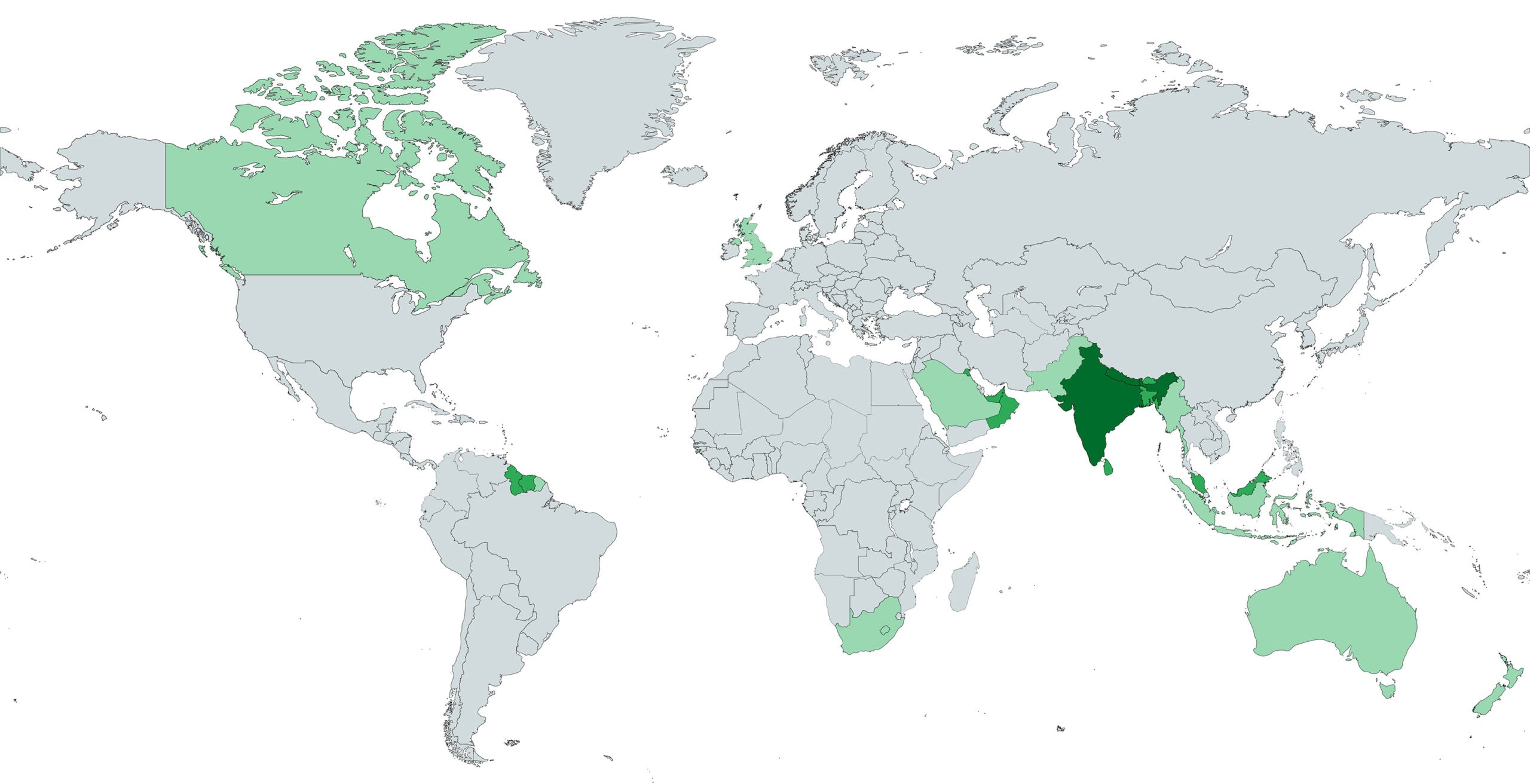
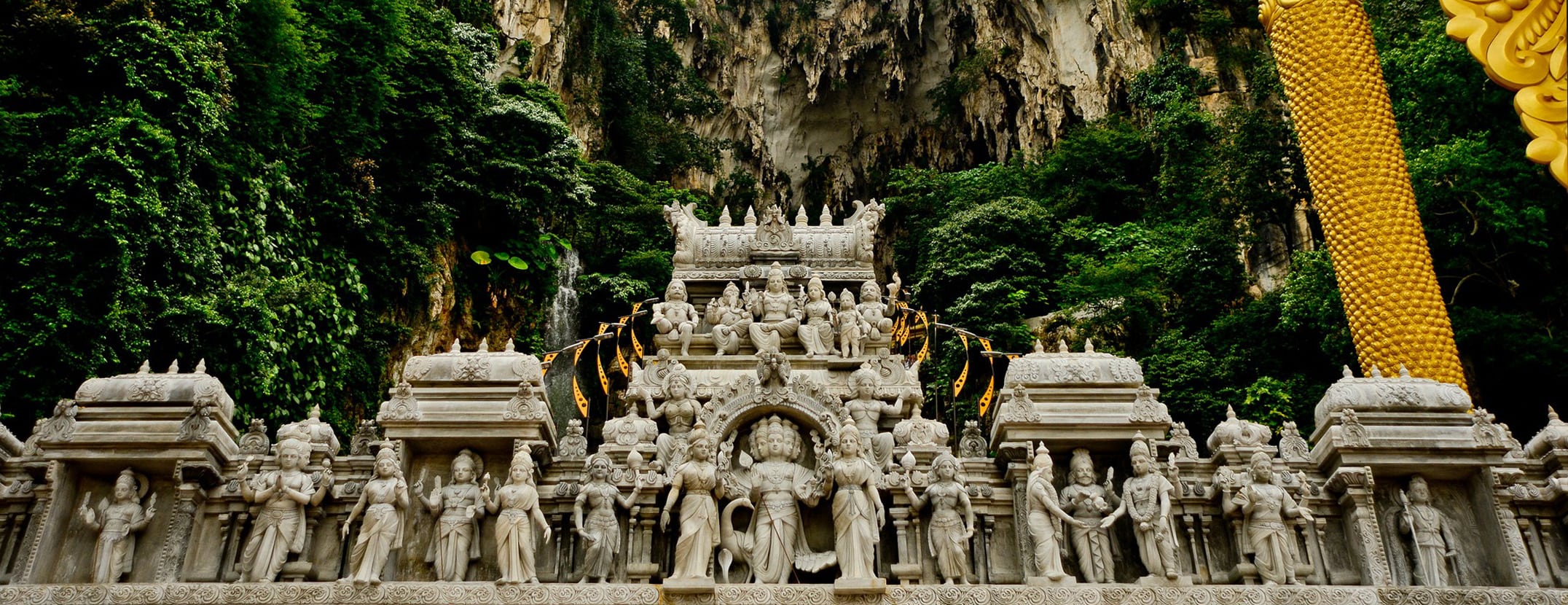
Batu Caves, Hindu Shrine in Gombak, Selangor, Malaysia
History of Hinduism
Most experts date the origins of Hinduism to the 2nd millennium BCE, though its foundational texts and practices are likely from even earlier. The religion sprang from the Indus Valley civilization, which was located in what is now subcontinental India. Its traditions are rooted in Vedism, an ancient religion that is no longer practiced but whose writings still exist.
Initially, the term “Hindu” was an ethnic term for the inhabitants of India used by foreign travelers to the subcontinent. Over time, the term evolved to refer specifically to the various beliefs, tenets, and writings that make up Hinduism.
For much of the Common Era, Hinduism was the dominant religion across Southeast Asia. Islam and Christianity have challenged that dominance, as well as by Buddhism, a non-Vedic religion that arose in India independently of Hinduism. Today, though, Hinduism remains the second largest religion in Asia, slightly behind Islam.
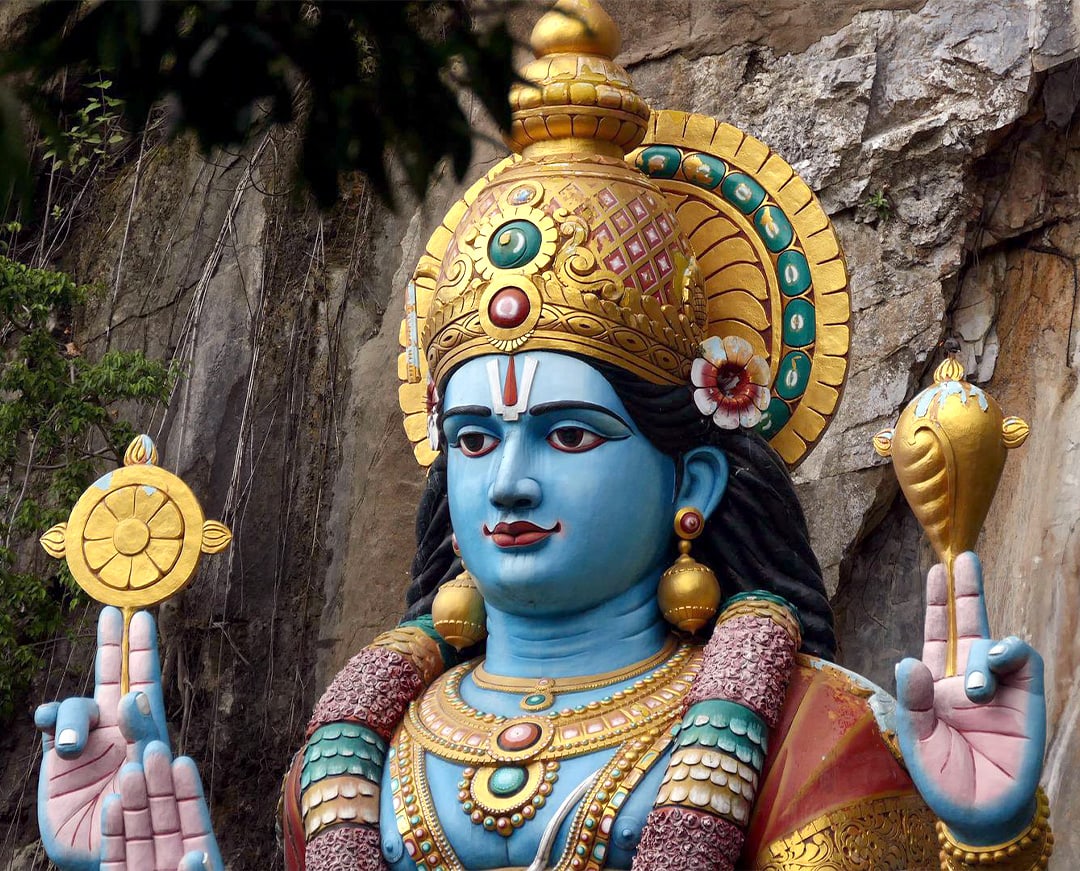
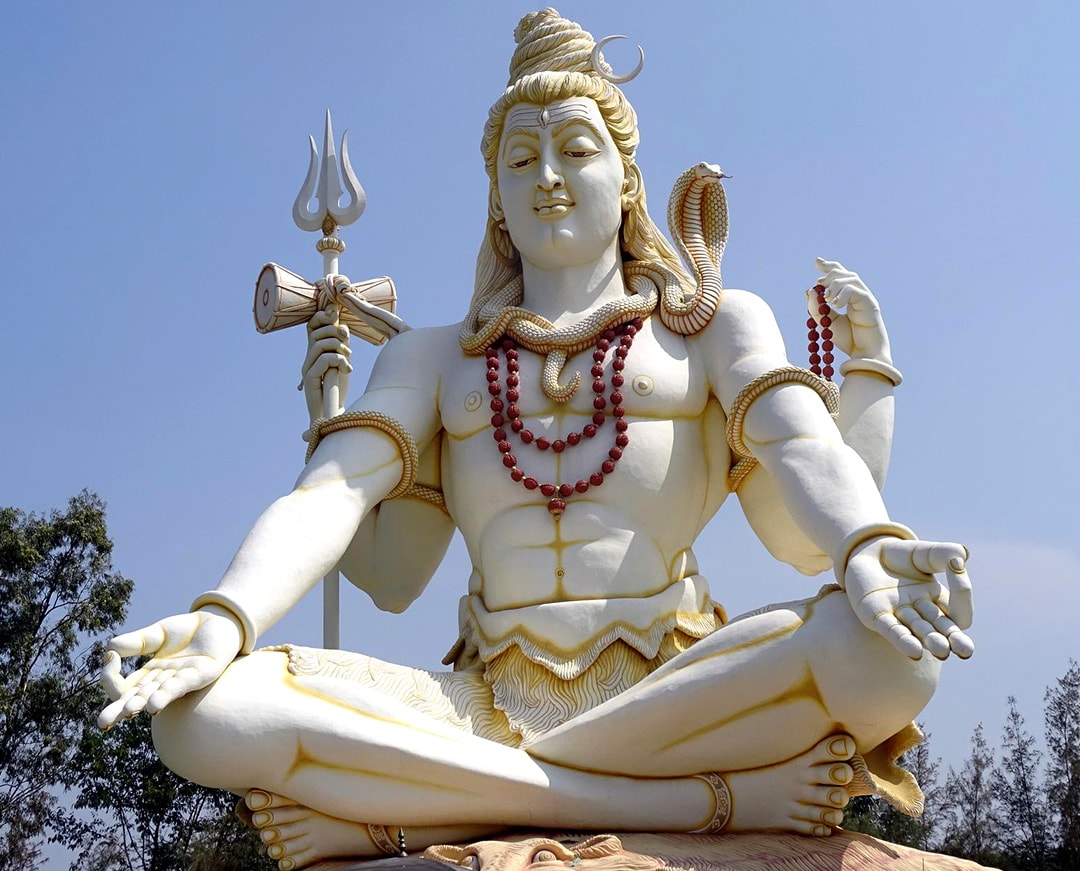
Vishnu near Batu Caves (top), Shivgiri Shiva Temple (bottom)
Deities of Hinduism
Hinduism is the world's largest polytheistic religion. Simultaneously, it is considered a nontheistic religion because belief in a god or gods is not necessary within the faith. This means even an atheist can be a Hindu.
Nonetheless, there are 33 million gods and goddesses that are worshipped in Hinduism, known as Devas (male) and Devis (female). However, nearly all of those gods are specific to regions and cultures. They are more accurately thought of as demigods, deities with specific jurisdictions in the natural and spiritual world.
There are, though, a few major deities of Hinduism, Vishnu and Shiva being perhaps the two most recognizable. Vishnu is referred to as “the Preserver,” while Shiva is called “the Destroyer.” A third god, Brahma, is called “the Creator,” though Brahma doesn’t feature as prominently in Hindu faith.
Vishnu, whose adherents are Vaishnavas, is depicted as a blue-skinned being with four arms. Shiva, whose adherents are Shaivas, usually appears as an ash-white man with a third eye. Both are ascribed a variety of characteristics and power, and, like most Hindu gods, they have many names and serve multiple roles in the differing “denominations” of Hinduism. For instance, Vishnu is at times known as Krishna, but Krishna is also often celebrated as a separate Supreme Being.
Then there is Shakti, or simply “the Goddess,” considered the divine feminine force and creative energy of the universe. Shakti, whose denomination is known as Shaktism, is sometimes thought of as the “Mother” of creation, while in another one of her forms, Parvati, she is Shiva’s wife.
Tenets of Hinduism
The most familiar tenet of Hinduism is karma. Meaning “action”, karma relates to reincarnation or rebirth; actions in one life affect future lives. Karma does not refer to “the Universe” punishing people for wrongdoings. It is, instead, a universal “law” that guides one’s path through multiple existences and, ultimately, out of the cycle of life and death, known as samsara.
Another common concept in Hinduism is dharma, the moral law that guides how one lives. Dharma includes broad virtues like honesty and generosity, but it also pertains to responsibilities in life, like being a good father.
Hinduism does not ascribe to the idea of one central “truth” that must be accepted to reach salvation. Instead, Hinduism is an individual and collective journey to truth, a truth that can be discovered through many sources. Hinduism is not a path to heaven, but a cyclical journey through multiple lives to become one with Brahman, the highest realm of existence.
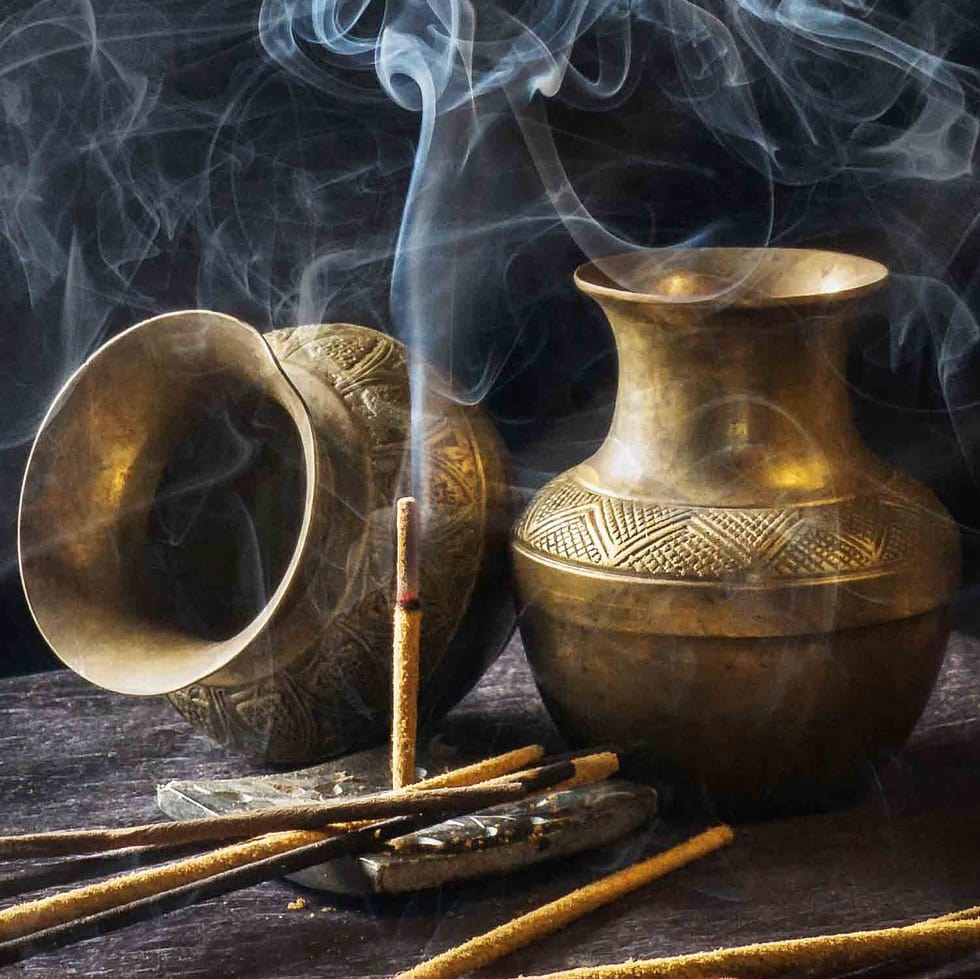
Incense is often burnt during Hindu ceremonies and prayers
Hindu Persecution
Though Hinduism does not claim to have the singular truth, it has nonetheless, throughout its long history, been both persecuted by other religions and a persecutor of differing faiths.
Historically, Muslim, and Christian invaders have attacked native Hindu believers in India, killing and imprisoning them and forcing conversions on others. These foreigners have also destroyed Hindu temples and holy sites. There is also a history of interfaith conflicts between Hindus and Buddhists.
In recent years, Hindu “fundamentalists” in parts of India have persecuted Christians, vandalizing churches, destroying religious relics, and initiating violent confrontations.
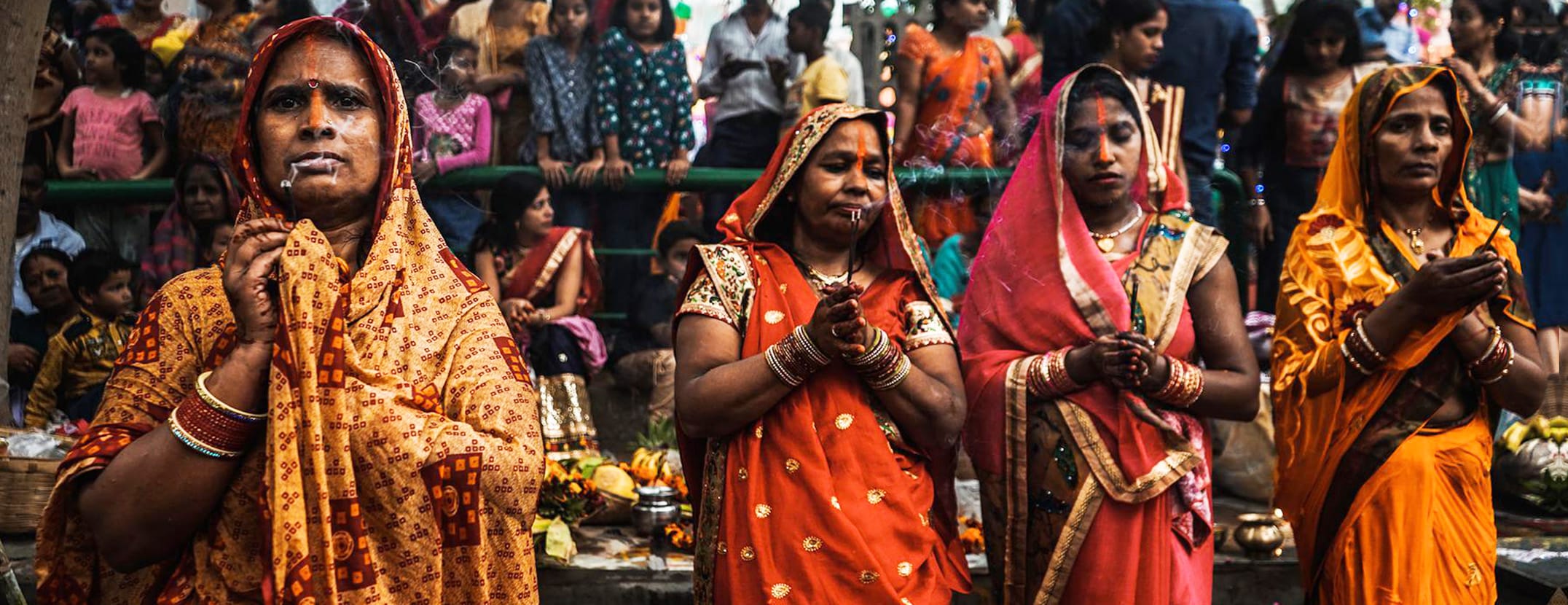
Indian women praying in gratitude to the sun deity, Surya, during Chhath Puja, a widely practiced Hindu festival.

History of Hinduism
Most experts date the origins of Hinduism to the 2nd millennium BCE, though its foundational texts and practices are likely from even earlier. The religion sprang from the Indus Valley civilization, which was located in what is now subcontinental India. Its traditions are rooted in Vedism, an ancient religion that is no longer practiced but whose writings still exist.

Initially, the term “Hindu” was an ethnic term for the inhabitants of India used by foreign travelers to the subcontinent. Over time, the term evolved to refer specifically to the various beliefs, tenets, and writings that make up Hinduism.
For much of the Common Era, Hinduism was the dominant religion across Southeast Asia. Islam and Christianity have challenged that dominance, as well as by Buddhism, a non-Vedic religion that arose in India independently of Hinduism. Today, though, Hinduism remains the second largest religion in Asia, slightly behind Islam.

Deities of Hinduism
Hinduism is the world's largest polytheistic religion. Simultaneously, it is considered a nontheistic religion because belief in a god or gods is not necessary within the faith.
Nonetheless, there are 33 million gods and goddesses that are worshipped in Hinduism, known as Devas (male) and Devis (female). However, nearly all of those gods are specific to regions and cultures. They are more accurately thought of as demigods, deities with specific jurisdictions in the natural and spiritual world.
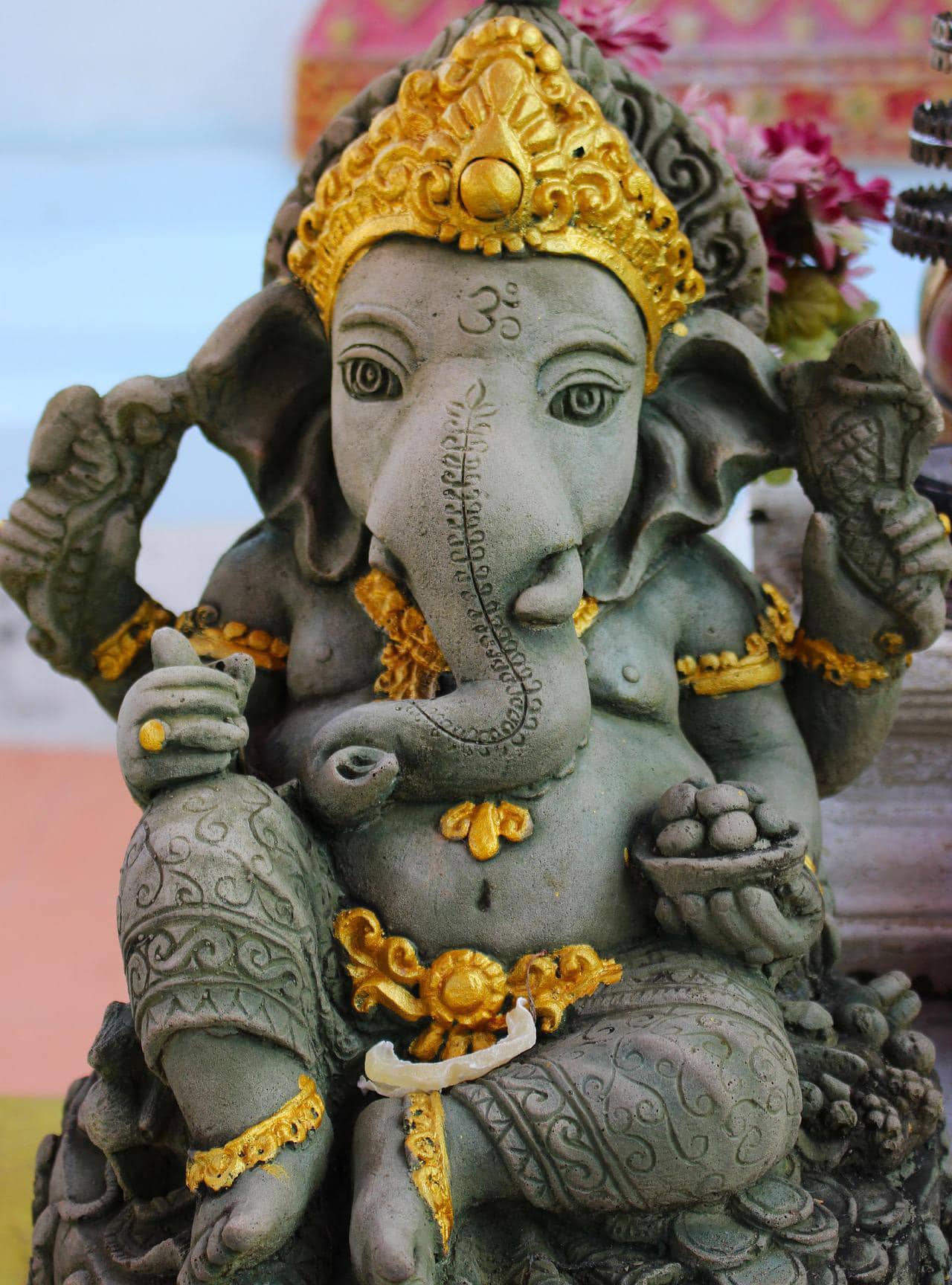
There are, though, a few major deities of Hinduism, Vishnu and Shiva being perhaps the two most recognizable. Vishnu is referred to as “the Preserver,” while Shiva is called “the Destroyer.” A third god, Brahma, is called “the Creator,” though Brahma doesn’t feature as prominently in Hindu faith.
Vishnu, whose adherents are Vaishnavas, is depicted as a blue-skinned being with four arms. Shiva, whose adherents are Shaivas, usually appears as an ash-white man with a third eye. Both are ascribed a variety of characteristics and power, and, like most Hindu gods, they have many names and serve multiple roles in the differing “denominations” of Hinduism. For instance, Vishnu is at times known as Krishna, but Krishna is also often celebrated as a separate Supreme Being.
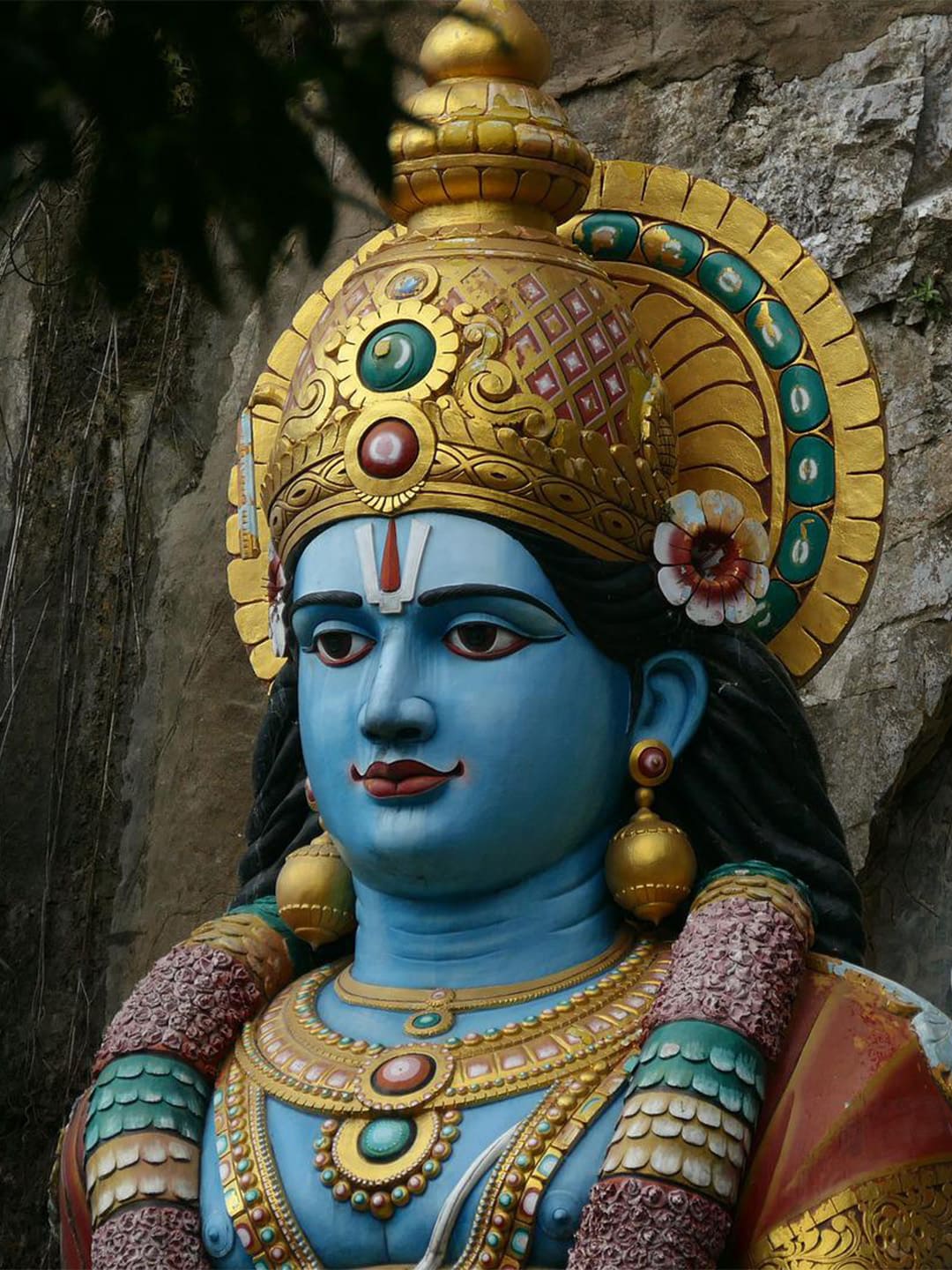
Vishnu, whose adherents are Vaishnavas, is depicted as a blue-skinned being with four arms. Shiva, whose adherents are Shaivas, usually appears as an ash-white man with a third eye. Both are ascribed a variety of characteristics and power, and, like most Hindu gods, they have many names and serve multiple roles in the differing “denominations” of Hinduism. For instance, Vishnu is at times known as Krishna, but Krishna is also often celebrated as a separate Supreme Being.
Then there is Shakti, or simply “the Goddess,” considered the divine feminine force and creative energy of the universe. Shakti, whose denomination is known as Shaktism, is sometimes thought of as the “Mother” of creation, while in another one of her forms, Parvati, she is Shiva’s wife.

Tenets of Hinduism
The most familiar tenet of Hinduism is karma. Meaning “action”, karma relates to reincarnation or rebirth; actions in one life affect future lives. Karma does not refer to “the Universe” punishing people for wrongdoings. It is, instead, a universal “law” that guides one’s path through multiple existences and, ultimately, out of the cycle of life and death, known as samsara.
Another common concept in Hinduism is dharma, the moral law that guides how one lives. Dharma includes broad virtues like honesty and generosity, but it also pertains to responsibilities in life, like being a good father.
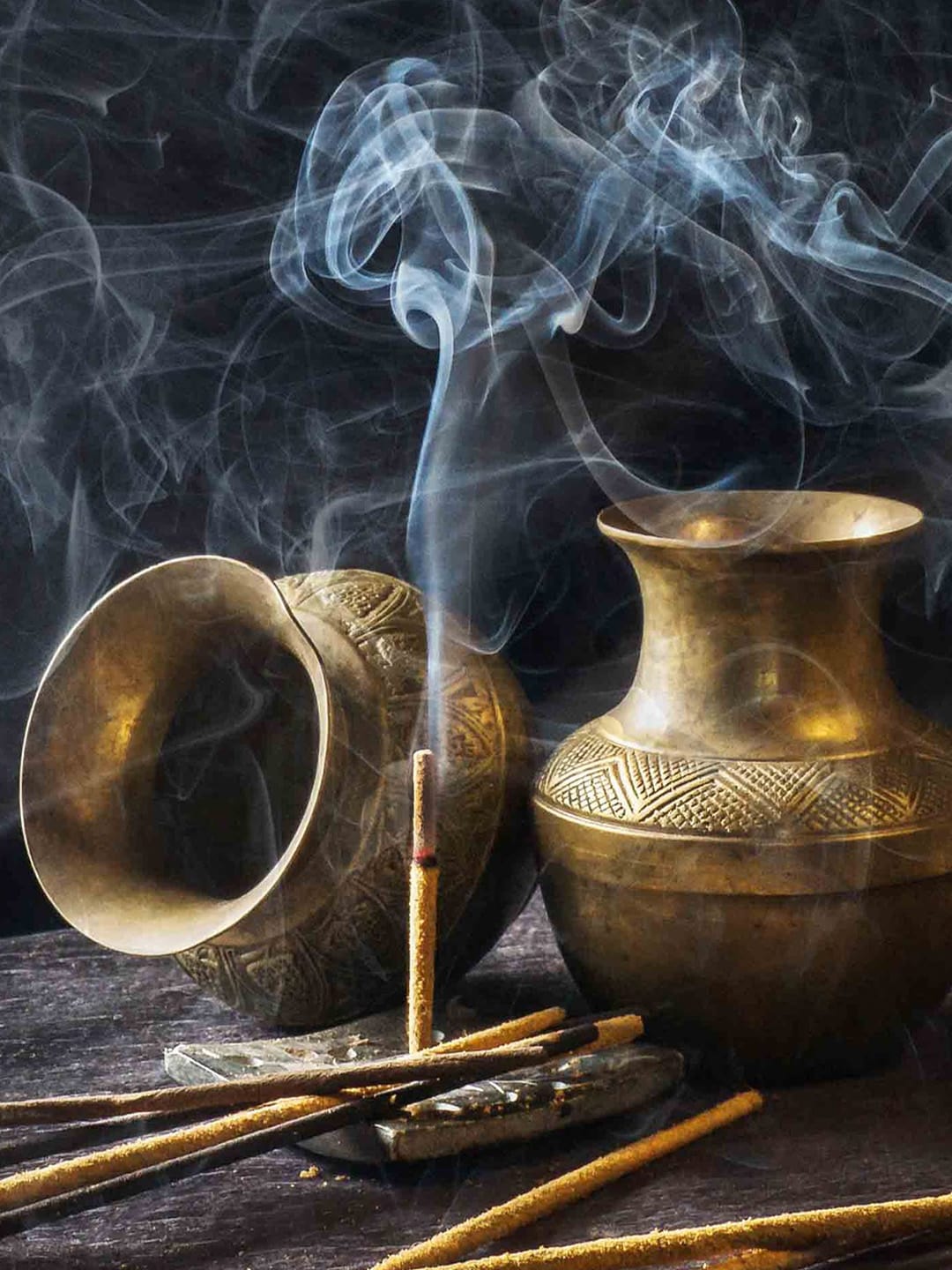
Hinduism does not ascribe to the idea of one central “truth” that must be accepted to reach salvation. Instead, Hinduism is an individual and collective journey to truth, a truth that can be discovered through many sources. Hinduism is not a path to heaven, but a cyclical journey through multiple lives to eventually become one with Brahman, the highest realm of existence.
Hindu Persecution
Though Hinduism does not claim to have the singular truth, it has nonetheless, throughout its long history, been both persecuted by other religions and a persecutor of differing faiths.
Historically, Muslim, and Christian invaders have attacked native Hindu believers in India, killing and imprisoning them and forcing conversions on others. These foreigners have also destroyed Hindu temples and holy sites. There is also a history of interfaith conflicts between Hindus and Buddhists.
In recent years, Hindu “fundamentalists” in parts of India have persecuted Christians, vandalizing churches, destroying religious relics, and initiating violent confrontations.
